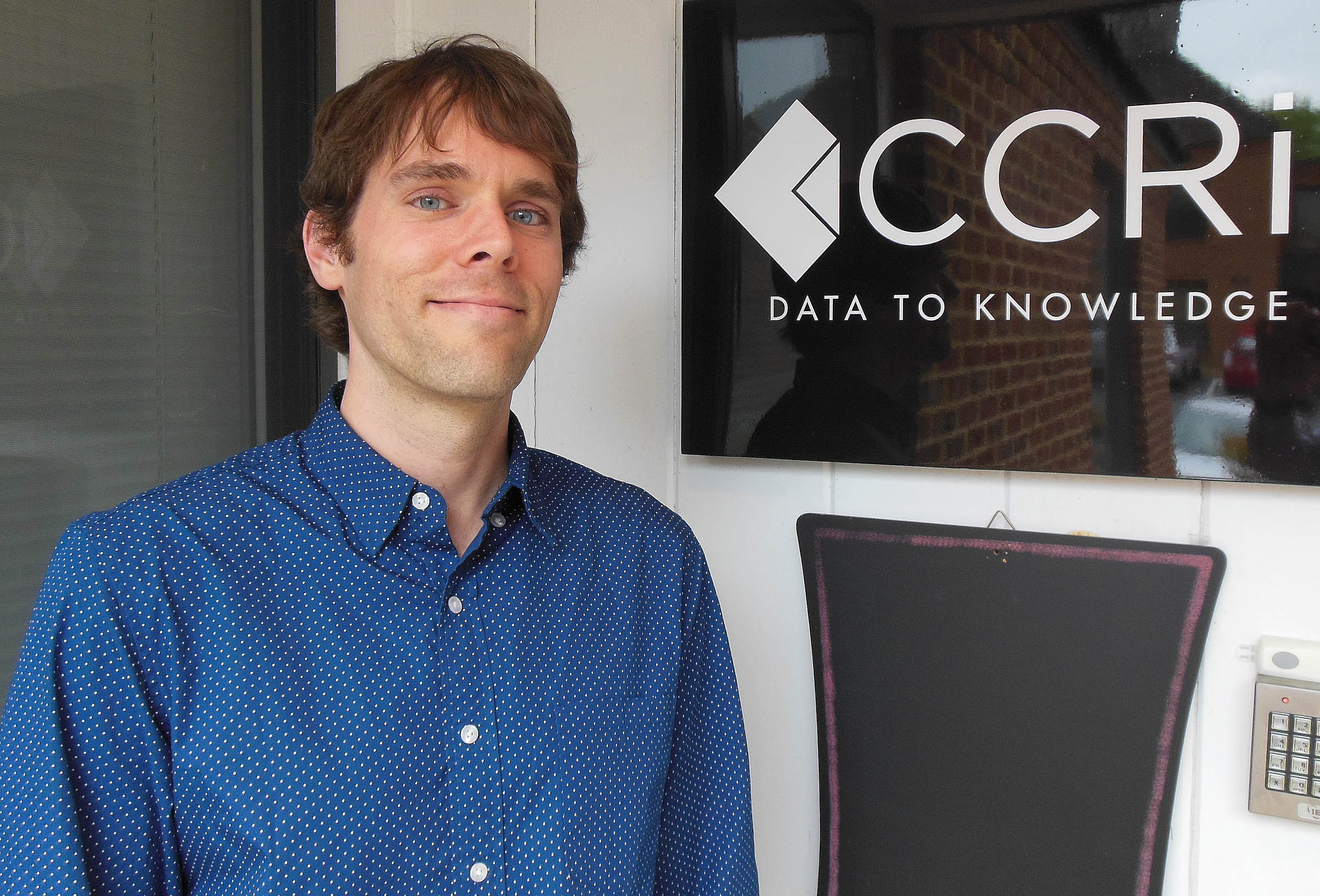GA-CCRi Employee Alec Gosse Uses Big Data to Seek Insights to Bicycle Travel Flow
As a longtime bicyclist, Alec Gosse is concerned with bike safety and the desire to make bicycle travel practical in a society centered on automobile travel.
As a civil and environmental engineering student at the University of Virginia, he wrote two published research papers on infrastructure and active transportation and co-led a “big data” project designed to get a better fix on bicycle usage and its relation to the more dominant automobile and bus traffic in Charlottesville.
That work, and another paper, formed the basis of his dissertation, which led to Gosse earning his Ph.D. in civil and environmental engineering in December. He now works for Commonwealth Computer Research Inc., a Charlottesville company that provides advanced analytical services to clients in cyber security, data fusion, predictive analysis and in other domains.

With $40,000 in funding from the U.Va. Alumni Association’s Jefferson Trust, Gosse and electrical and computer engineering graduate student Emmanuel Denloye-Ito developed a multidisciplinary project to improve bicycle transportation by sorting through masses of traffic camera data, and then using that data to create computer models that ultimately could provide insight to complex traffic patterns. The idea is that such knowledge eventually will be useful for planning roads that will provide safer, more attractive infrastructure for bicycles, and thus encourage more bicycle use.
“Very little is known about bicycle traffic patterns by city and state governments, so we had the idea to find a way to extract and make sense of such data by using traffic monitoring systems already in place around the city,” Gosse said. “The ultimate goal is to gain a better understanding of how cyclists use existing infrastructure, and then use that knowledge to optimize future investments.”
Gosse and Denloye-Ito began seeking ways to make traffic signal detection cameras count bicycles in addition to cars. These cameras are increasingly employed to alert traffic signals of waiting vehicles; however, the software is not designed to distinguish bicycles. In essence, they are lost data.
The researchers developed a way to begin capturing this data by, in effect, training cameras at various intersections to “know” what to look for, and to count it. It is a big data project in the sense that the research “mines” a particular type of data that already exists and is continuously collected, but is lost in the mass of other information that is used for other purposes.
Gosse said bicycle traffic is more likely than motor vehicle traffic to be affected by weather, distance to destination, time of day, infrastructure and other factors.
To get more people to ride bikes more often, planners would need to structure roads, intersections and bike paths to accommodate safe bicycling as a practical means of commuting.
“If bicycling were more comfortable to do in urban areas, as it is in parts of Europe, I really believe many more people would do it,” Gosse said. “It would have so many benefits for public health and the environment. People would get more exercise; there would be less obesity, a reduction in pollutants and greenhouse gasses, and real progress toward bridging our current transportation funding shortfall.
“Making bicycling-as-transportation common, however, will require new thinking on the part of city engineers about how to compute the costs and benefits of road projects. We could do that with better non-motorized data to bridge the information divide between transportation planning and the public health costs we bear as a result.”
Gosse’s bicycle traffic study is one of eight Big Data projects funded through a grant from the Jefferson Trust Foundation, and in collaboration with the Office of the Vice President for Research and the University’s newly founded Data Science Institute. The big data research initiative is designed to create opportunities for graduate students in diverse disciplines to collaborate in search of solutions to contemporary problems that are far broader than individual disciplines. This enhances the student experience and improves research across the University.
“Alec’s project is a great example of two important aspects of data science,” said Don Brown, director of the Data Science Institute and W.S. Calcott Professor of Systems and Information Engineering. “First, it shows that by repurposing sensors – traffic lights in this case – we can efficiently collect the data we need for better urban design. Second, by combining the data science techniques and domain expertise from two disciplines, we can solve problems that were previously considered too difficult by each individual discipline.
“So the multidisciplinary approach that Alec and his colleagues developed for this problem provided an important new direction for urban planning,” he said. “It also gave Alec the skills he needed to obtain a highly sought position with GA-CCRi, a local company doing leading research and development in data science.”
Originally reported by Fariss Samarrai in UVA Today on May 15, 2014